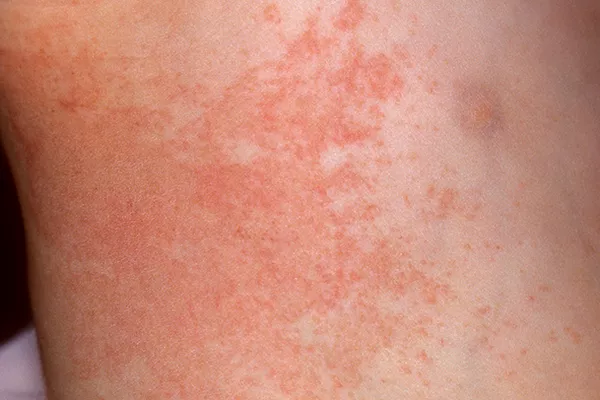Vitiligo is a chronic skin condition characterized by the loss of pigment, resulting in white patches on the skin. It can affect individuals of all skin types and ages, causing significant cosmetic concerns and emotional distress. Among the various types of vitiligo, localized vitiligo is one of the less extensive forms, affecting specific areas of the body without widespread distribution. This article delves into the nature of localized vitiligo, its causes, symptoms, diagnosis, treatment options, and its impact on patients’ lives.
Understanding Localized Vitiligo
Localized vitiligo, also known as focal vitiligo, is characterized by a limited number of depigmented patches that are confined to specific areas of the body. Unlike generalized vitiligo, which can spread and affect larger areas, localized vitiligo typically remains restricted and does not usually progress to other parts of the body. This form of vitiligo is more manageable in terms of treatment and psychological impact compared to more extensive forms.
Causes of Localized Vitiligo
The exact cause of vitiligo, including localized vitiligo, remains unknown. However, several theories suggest that it results from a combination of genetic, autoimmune, and environmental factors.
Genetic Factors
There is a significant genetic component to vitiligo. Studies have shown that individuals with a family history of vitiligo or other autoimmune diseases are at a higher risk of developing the condition. Specific genetic mutations and variations have been linked to the susceptibility to vitiligo, indicating a hereditary predisposition.
Autoimmune Response
One of the leading theories suggests that vitiligo is an autoimmune disorder. In this scenario, the body’s immune system mistakenly targets and destroys melanocytes, the cells responsible for producing pigment in the skin. This destruction leads to the formation of white patches. The exact trigger for this autoimmune response is not well understood, but it may involve genetic predisposition and environmental factors.
Environmental Factors
Certain environmental factors are believed to contribute to the onset of vitiligo. These may include exposure to specific chemicals, stress, skin trauma, and infections. While these factors alone may not cause vitiligo, they can potentially trigger the condition in individuals who are genetically predisposed.
Symptoms of Localized Vitiligo
The primary symptom of localized vitiligo is the appearance of white or depigmented patches on the skin. These patches can vary in size and shape and are often found in areas exposed to the sun, such as the face, neck, hands, and feet. In some cases, localized vitiligo may also affect mucous membranes, hair, and even the eyes.
Characteristics of Depigmented Patches
- Color: The patches are usually milky white, with a distinct border separating them from the surrounding normal skin.
- Shape and Size: The patches can be round, oval, or irregular in shape. Their size can range from a few millimeters to several centimeters.
- Location: Localized vitiligo typically affects areas exposed to the sun or areas prone to friction, such as the elbows, knees, and genital regions.
- Hair: Hair within the depigmented patches may also lose its color, turning white or gray.
Psychological Impact
The appearance of white patches on the skin can lead to significant emotional and psychological distress. Individuals with localized vitiligo may experience low self-esteem, anxiety, depression, and social stigma. The visible nature of the condition often affects a person’s quality of life and interpersonal relationships.
Diagnosis of Localized Vitiligo
Diagnosing localized vitiligo involves a combination of medical history, physical examination, and laboratory tests. A dermatologist is typically the healthcare professional responsible for diagnosing and managing vitiligo.
Medical History and Physical Examination
The diagnostic process begins with a thorough medical history and physical examination. The dermatologist will inquire about the patient’s family history of vitiligo or other autoimmune diseases, the onset and progression of the depigmented patches, and any potential triggering factors, such as recent skin trauma or stress.
Wood’s Lamp Examination
A Wood’s lamp, which emits ultraviolet light, is often used to examine the skin in a darkened room. Under this light, depigmented patches of vitiligo will appear brighter and more distinct, aiding in the diagnosis. This tool is especially useful for identifying patches in individuals with fair skin, where the contrast between normal and depigmented skin may be less apparent.
SEE ALSO: The Best Treatment for Vitiligo on Hands
Skin Biopsy
In some cases, a skin biopsy may be performed to confirm the diagnosis. A small sample of skin from the depigmented area is taken and examined under a microscope. The biopsy can reveal the absence of melanocytes, confirming the diagnosis of vitiligo.
Blood Tests
Blood tests may be conducted to rule out other autoimmune conditions commonly associated with vitiligo, such as thyroid disorders, diabetes, and pernicious anemia. These tests help in assessing the overall health of the patient and identifying any underlying conditions that may require attention.
Treatment Options for Localized Vitiligo
While there is no cure for vitiligo, several treatment options can help manage the condition and improve the appearance of the skin. The choice of treatment depends on various factors, including the extent of depigmentation, the patient’s age, and their preference. Treatment options for localized vitiligo include topical therapies, phototherapy, and surgical interventions.
Topical Therapies
Topical medications are often the first line of treatment for localized vitiligo. These include:
- Corticosteroids: Topical corticosteroids are commonly prescribed to reduce inflammation and suppress the immune response. They can help repigment the skin by stimulating melanocyte activity. However, long-term use may lead to side effects, such as skin thinning.
- Calcineurin Inhibitors: Topical calcineurin inhibitors, such as tacrolimus and pimecrolimus, are used as an alternative to corticosteroids, especially for sensitive areas like the face and genitals. They work by modulating the immune response and promoting repigmentation.
- Vitamin D Analogues: Topical vitamin D analogues, such as calcipotriol, can be used in combination with other treatments to enhance repigmentation. They help regulate melanocyte function and promote pigment production.
Phototherapy
Phototherapy, also known as light therapy, involves exposing the skin to ultraviolet (UV) light under medical supervision. Two main types of phototherapy are used for vitiligo:
- Narrowband UVB (NB-UVB) Therapy: NB-UVB therapy is the most commonly used form of phototherapy for vitiligo. It involves exposing the skin to a specific wavelength of UVB light, which stimulates melanocyte activity and promotes repigmentation. Treatments are typically administered two to three times a week over several months.
- PUVA Therapy: PUVA therapy combines the use of a photosensitizing medication called psoralen with UVA light exposure. This treatment is less commonly used due to its potential side effects and the need for careful monitoring.
Surgical Interventions
Surgical treatments are considered for patients with stable, localized vitiligo who do not respond to other therapies. These procedures aim to transplant melanocytes from normal skin to the depigmented areas. Common surgical interventions include:
- Punch Grafting: Small grafts of normal skin are taken from a donor site and transplanted into the depigmented patches. This technique is effective for small, stable patches of vitiligo.
- Blister Grafting: Blisters are created on normal skin using suction, and the top layer of the blister is transplanted to the depigmented area. This method is suitable for small patches and has a lower risk of scarring.
- Cellular Grafting: Melanocytes and keratinocytes are harvested from normal skin, processed, and transplanted to the depigmented areas. This technique is more complex but can achieve better cosmetic results.
Managing the Psychological Impact
The psychological impact of localized vitiligo can be profound, affecting an individual’s self-esteem and quality of life. Addressing the emotional and psychological aspects of the condition is essential for comprehensive care.
Psychological Support
- Counseling and Therapy: Counseling and therapy can help individuals cope with the emotional challenges of living with vitiligo. Cognitive-behavioral therapy (CBT) and support groups provide valuable support and coping strategies.
- Education and Awareness: Educating patients and their families about vitiligo can help reduce stigma and improve understanding. Raising awareness in the community can also foster a more inclusive and supportive environment.
Cosmetic Camouflage
Cosmetic camouflage products, such as makeup and self-tanning lotions, can help conceal depigmented patches and improve the appearance of the skin. Professional makeup artists can provide guidance on selecting and applying these products effectively.
Conclusion
Localized vitiligo is a form of vitiligo characterized by limited depigmented patches confined to specific areas of the body. While the exact cause remains unknown, a combination of genetic, autoimmune, and environmental factors is believed to contribute to its development. Diagnosing localized vitiligo involves a thorough medical history, physical examination, and laboratory tests.
Although there is no cure for vitiligo, various treatment options, including topical therapies, phototherapy, and surgical interventions, can help manage the condition and improve the appearance of the skin. Addressing the psychological impact of vitiligo is crucial, and support from counseling, therapy, and cosmetic camouflage can significantly enhance the quality of life for individuals with localized vitiligo.
Understanding and managing localized vitiligo requires a comprehensive approach that considers both the physical and emotional aspects of the condition. With appropriate care and support, individuals with localized vitiligo can lead fulfilling lives and navigate the challenges posed by this chronic skin condition.
Related Topics:

























